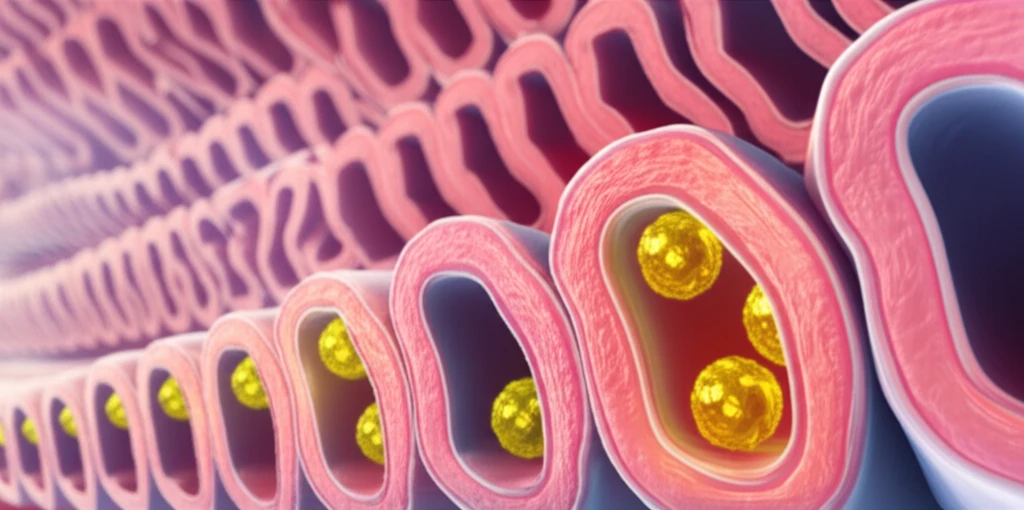
Gut Check: How Your Body's Fat Absorption System Could Be the Key to Better Health
"New research uncovers the hidden role of VEGFR-3 signaling in regulating triglyceride retention and absorption in the intestine, potentially unlocking future treatments for metabolic disorders."
Imagine a sophisticated highway system inside your body, dedicated to transporting fats from the food you eat to where they're needed for energy and other essential functions. This system relies on tiny vessels in your intestines called lacteals, which absorb dietary fats packaged as chylomicrons. For years, scientists believed this was a passive process, but now they're discovering it's a highly regulated and dynamic operation.
At the heart of this regulation is a crucial molecule called Vascular Endothelial Growth Factor-C (VEGF-C). This major lymphangiogenic factor is known to maintain lacteal function, but the precise role of its partner, the tyrosine kinase VEGF receptor 3 (VEGFR-3), in fat absorption has remained a mystery. New research is shedding light on this critical interaction.
A recent study published in Frontiers in Physiology has uncovered how VEGFR-3 signaling plays a pivotal role in triglyceride (TG) absorption and distribution within the body. The research team used a unique mouse model, called Chy, with a specific mutation that inactivates VEGFR-3. The results revealed a surprising connection between VEGFR-3 signaling and how our bodies process dietary fats, offering new insights into potential therapeutic targets for metabolic disorders.
The VEGFR-3 Connection: How it Impacts Fat Processing

The study's findings revealed that when VEGFR-3 is not functioning correctly, it leads to a cascade of effects that disrupt the normal fat absorption process. Specifically, the researchers observed:
- Fat Retention: Triglycerides tend to accumulate within the cells lining the small intestine (enterocytes).
- Reduced Plasma TG Levels: After a meal, the levels of triglycerides in the blood are lower than normal.
- Increased Fecal Excretion: More free fatty acids (FFAs) and triglycerides are excreted in the stool.
- Nitric Oxide Reduction: Levels of nitric oxide (NO), a molecule needed for chylomicron mobilization, are significantly reduced in the intestine after a fat-rich meal.
The Future of Fat Absorption Research: Targeting VEGFR-3
This research opens up new avenues for understanding and potentially treating metabolic disorders related to fat malabsorption. By identifying VEGFR-3 signaling as a key regulator in this process, scientists can now focus on developing targeted therapies to improve fat processing in the gut.
One potential strategy could involve finding ways to enhance VEGFR-3 signaling in individuals with impaired fat absorption. This might involve developing drugs or other interventions that stimulate VEGFR-3 activity or increase the production of nitric oxide, which is essential for chylomicron mobilization.
While more research is needed to fully understand the implications of these findings, this study provides a valuable foundation for future investigations into the role of VEGFR-3 in metabolic health. By unlocking the secrets of fat absorption in the gut, we may be able to develop new strategies to combat obesity, improve nutrient utilization, and promote overall well-being.
